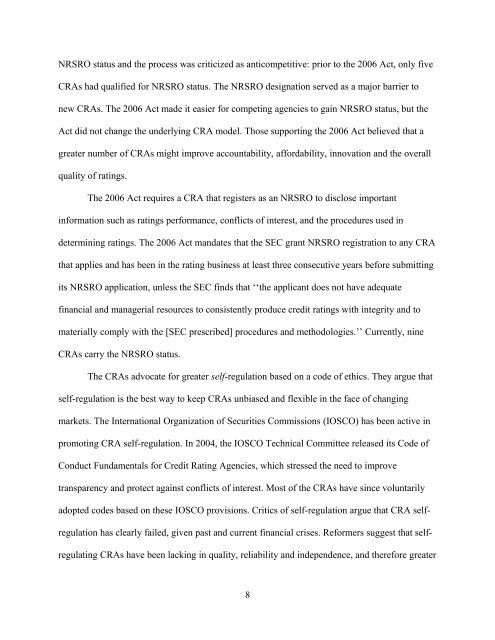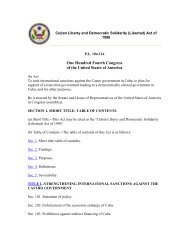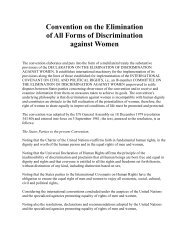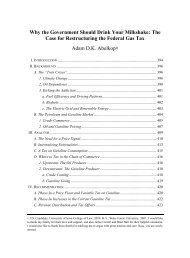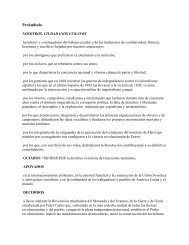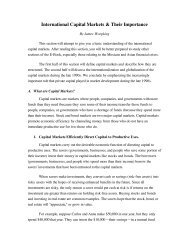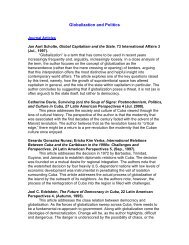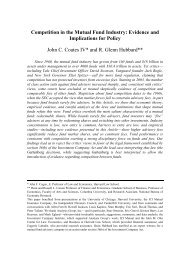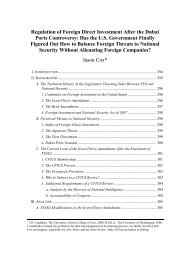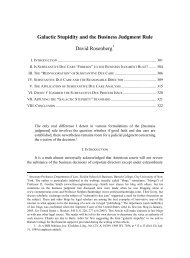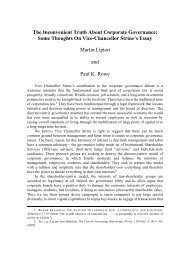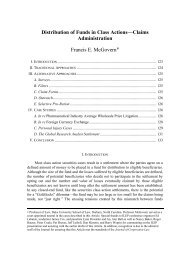What Role Did Credit Rating Agencies Play in the Credit Crisis? By ...
What Role Did Credit Rating Agencies Play in the Credit Crisis? By ...
What Role Did Credit Rating Agencies Play in the Credit Crisis? By ...
You also want an ePaper? Increase the reach of your titles
YUMPU automatically turns print PDFs into web optimized ePapers that Google loves.
NRSRO status and <strong>the</strong> process was criticized as anticompetitive: prior to <strong>the</strong> 2006 Act, only five<br />
CRAs had qualified for NRSRO status. The NRSRO designation served as a major barrier to<br />
new CRAs. The 2006 Act made it easier for compet<strong>in</strong>g agencies to ga<strong>in</strong> NRSRO status, but <strong>the</strong><br />
Act did not change <strong>the</strong> underly<strong>in</strong>g CRA model. Those support<strong>in</strong>g <strong>the</strong> 2006 Act believed that a<br />
greater number of CRAs might improve accountability, affordability, <strong>in</strong>novation and <strong>the</strong> overall<br />
quality of rat<strong>in</strong>gs.<br />
The 2006 Act requires a CRA that registers as an NRSRO to disclose important<br />
<strong>in</strong>formation such as rat<strong>in</strong>gs performance, conflicts of <strong>in</strong>terest, and <strong>the</strong> procedures used <strong>in</strong><br />
determ<strong>in</strong><strong>in</strong>g rat<strong>in</strong>gs. The 2006 Act mandates that <strong>the</strong> SEC grant NRSRO registration to any CRA<br />
that applies and has been <strong>in</strong> <strong>the</strong> rat<strong>in</strong>g bus<strong>in</strong>ess at least three consecutive years before submitt<strong>in</strong>g<br />
its NRSRO application, unless <strong>the</strong> SEC f<strong>in</strong>ds that ‘‘<strong>the</strong> applicant does not have adequate<br />
f<strong>in</strong>ancial and managerial resources to consistently produce credit rat<strong>in</strong>gs with <strong>in</strong>tegrity and to<br />
materially comply with <strong>the</strong> [SEC prescribed] procedures and methodologies.’’ Currently, n<strong>in</strong>e<br />
CRAs carry <strong>the</strong> NRSRO status.<br />
The CRAs advocate for greater self-regulation based on a code of ethics. They argue that<br />
self-regulation is <strong>the</strong> best way to keep CRAs unbiased and flexible <strong>in</strong> <strong>the</strong> face of chang<strong>in</strong>g<br />
markets. The International Organization of Securities Commissions (IOSCO) has been active <strong>in</strong><br />
promot<strong>in</strong>g CRA self-regulation. In 2004, <strong>the</strong> IOSCO Technical Committee released its Code of<br />
Conduct Fundamentals for <strong>Credit</strong> <strong>Rat<strong>in</strong>g</strong> <strong>Agencies</strong>, which stressed <strong>the</strong> need to improve<br />
transparency and protect aga<strong>in</strong>st conflicts of <strong>in</strong>terest. Most of <strong>the</strong> CRAs have s<strong>in</strong>ce voluntarily<br />
adopted codes based on <strong>the</strong>se IOSCO provisions. Critics of self-regulation argue that CRA self-<br />
regulation has clearly failed, given past and current f<strong>in</strong>ancial crises. Reformers suggest that self-<br />
regulat<strong>in</strong>g CRAs have been lack<strong>in</strong>g <strong>in</strong> quality, reliability and <strong>in</strong>dependence, and <strong>the</strong>refore greater<br />
8


